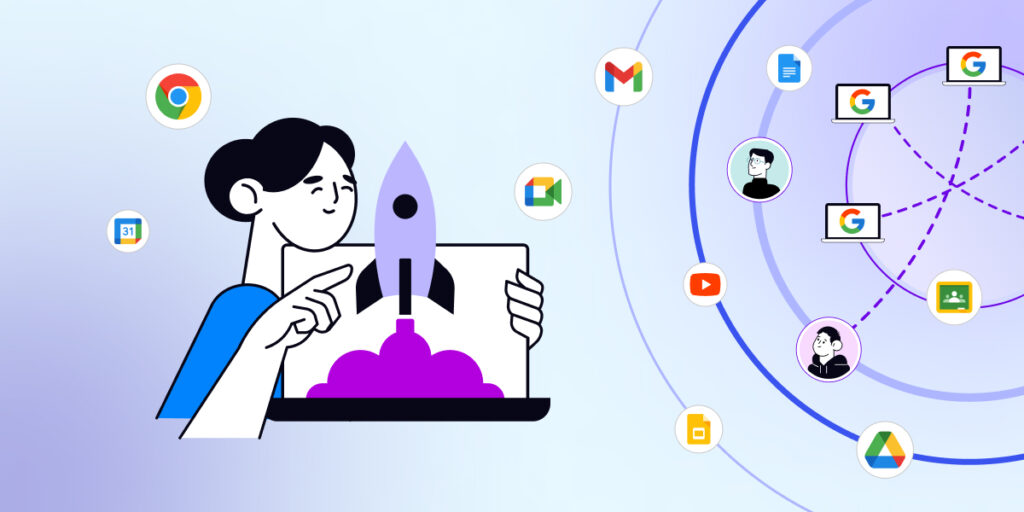As we look towards a brighter future in education, one key challenge consistently emerges: How do we ensure that every student feels valued and included, regardless of their background? Diversity in education is not just a goal but a pathway to richer, more meaningful learning experiences.
In an era where technology and digital classrooms are at the forefront of our teaching methods, Google Admins must navigate the intricacies of diversity in online learning environments like Google Classroom. This is vital in ensuring that inclusivity transcends physical spaces and becomes a cornerstone of our digital education landscape.
In this blog, we will explore effective strategies that can transform classrooms into hubs of inclusivity and respect.
By embracing diversity, we not only enhance the educational journey for all students but also equip them to thrive in a diverse world.
The Essence of Diversity in Education
Diversity in the classroom extends beyond student backgrounds to the variety of perspectives in learning materials. It’s vital for students to see authors or historical figures they can relate to, enhancing connection and engagement with the subject.
In educational settings, valuing diverse viewpoints is key to fostering an environment where every student feels respected. This approach enriches learning as students engage with materials that reflect varied experiences and opinions.
For example, a history lesson on the Vietnam War can include perspectives from both U.S. and Vietnamese soldiers of different backgrounds, alongside academic views. Such a multifaceted approach not only broadens understanding but also deepens critical thinking.
Encountering diverse materials helps students develop a more rounded view of topics and recognize biases, leading to a more inclusive teaching method.
Recognizing the Challenges
Despite its importance, achieving true diversity in education is not without challenges. Biases, both conscious and unconscious, can influence teaching methods and classroom dynamics.
Additionally, a lack of representation in curriculum materials can lead to feelings of alienation among minority students. Addressing these issues requires a concerted effort from educators, Google Admins, and the wider school community.
Reflecting on Diversity
▪️ 60% Increase in Diversity Since the 90s: Schools in the U.S. have become substantially more diverse over the last few decades. This growth in diversity is a clear indicator of the changing demographics in classrooms and highlights the importance of integrating inclusive practices in education.
▪️ 8.5% of U.S. School Children are English Language Learners: This significant percentage underscores the need for adaptive curriculums that accommodate multiple languages. It’s not just a statistic; it’s a call to action for educational systems to embrace and support linguistic diversity, fostering an environment where every student has the opportunity to excel.
▪️ Minority Representation Among Students and Teachers: While 44% of public school students were minorities in 2016, only 20% of teachers belonged to these groups. This represents a significant gap in representation, underlining the importance of culturally relevant teaching and the need for diverse role models in education.

Strategies for an Inclusive Classroom
Creating an inclusive classroom involves more than just acknowledging diversity; it requires active and ongoing engagement.
Key strategies include:
- Developing a curriculum that reflects a wide range of cultures and perspectives.
- Employing teaching methods that cater to diverse learning styles.
- Creating a classroom environment where every student feels safe and valued.
Tip for Google Classroom: Integrating technology, like GAT Labs’ tools, can play a significant role in this process. For instance, Teacher Assist can help ensure a safe online learning environment, crucial for maintaining a respectful and inclusive digital classroom. It allows for real-time monitoring and interaction with students’ online activity.
By using Teacher Assist, educators can promptly address any concerns and provide the necessary support to every student, making sure that the digital learning experience is beneficial for all.
Practical Tips for Educators
Educators and Google Admins can take several practical steps to promote inclusivity:
- Use language and examples in lessons that reflect a diverse range of experiences.
- Encourage students to share their perspectives and respect different viewpoints.
- Adapt teaching methods to suit various learning needs, using technology to support this adaptation.
Tip for Google Admins: GAT Labs’ solutions, such as GAT Flow, can streamline administrative tasks like onboarding students, giving teachers more time to focus on these inclusive practices. Furthermore, with GAT+, Google Workspace Super Admins can create and update their Google Classrooms across their school district without difficulty.
The Importance of Leadership in Promoting Diversity
School leaders play an important role in fostering an inclusive culture. They can set the tone by:
- Providing professional development opportunities focused on diversity and inclusivity.
- Encouraging a school-wide dialogue on these important issues.
- Implementing policies and practices that promote diversity.
How to Prevent School Racism and Hate Speech in Google Classroom
Conclusion:
Embracing diversity in education is not just about meeting a set of criteria; it’s about creating a learning environment where every student has the opportunity to thrive.
As educational technology continues to evolve, tools like GAT Labs will be invaluable in supporting these efforts.
Schedule a demo or contact us to learn more about how our solutions can enhance learning for every student in your classroom.
Audit. Manage. Protect.
Discover how Management & Security Services can help you with deeper insight and on-call, personalized assistance.








